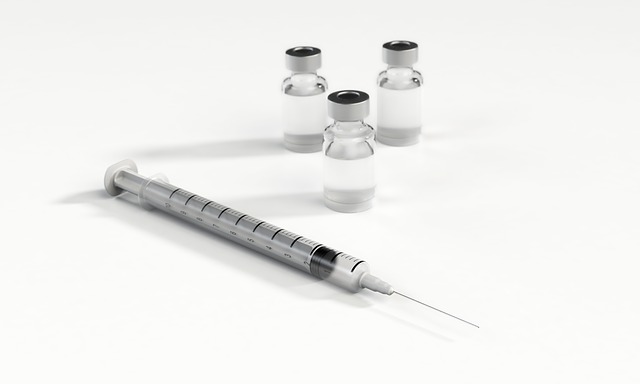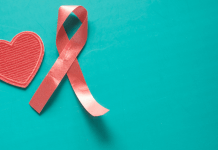I want to talk about something that might make you a little uncomfortable. I know, nobody wants to discuss sex and cancers of their sexual organs. But this is a conversation we need to have. As part of National Women’s Health Week, it’s important that we bring awareness to and destigmatize a serious women’s health issue. As women, we need to cultivate an understanding of cervical cancer—in order advocate for our own health. And as mothers? We have a responsibility to protect the health of our children (both our daughters and our sons).
Our Own Health
Half of the women diagnosed with cervical cancer are between the ages of 35 and 55. If you’re up to date on your Well Woman Exam, you’re doing your part in the detection of cervical cancer. That Pap smear looks for changes in the cells of the cervix. Ideally, you should have one every three years. After you turn 30, you can be tested for HPV (more about that later). If that test is negative, and your Pap smear was normal? You can wait five whole years between Pap tests.
And while nobody looks forward to their Well Woman Exam, this screening test dramatically reduces the number of US women dying from cervical cancer. (Seriously, numbers are down 75% in 50 years.) In Central America and on the African continent? Cervical cancer remains the number one cancer-related killer of women.
HPV vaccination allows us to go a step further – and actually prevent certain cancers. I know, I just said the “v” word. But, please. Hear me out.
What is HPV?
HPV stands for Human Papillomavirus. As we all know, millions of viruses out there target and affect different parts of our bodies. The flu (influenza) virus affects our upper-respiratory tract. The norovirus wreaks havoc on our gastrointestinal tract. HPV is a skin virus, and it has more than 150 different types (called strains). Some of these strains cause those pesky warts that appear on your fingers or feet. Other strains affect the skin around the genitals—so they pass from one person to another through intimate contact. A few of those strains cause certain cancers.
This skin virus is incredibly prevalent. According to the CDC, HPV is so common that the majority of all sexually-active men and women will get at least one type of the virus at some point in their lives. And since there are no symptoms? They may not know they are infected! There is no cure for the virus, but in people with healthy immune systems, the virus typically clears from their body in about two years. However, since there are more than 150 strains, a person could contract a new strain from a different partner. The more partners, the greater your risk for contracting HPV—and the greater the risk of retaining the virus.
What exactly is “intimate contact”?
Unfortunately, since these skin diseases spread through intimate contact, they are considered a Sexually Transmitted Infection. This places a stigma on the virus. And this places a stigma on the vaccine that could prevent cervical, vulvar, vaginal, anal, penile and oropharyngeal CANCERS.
To be clear, you don’t have to have sexual intercourse to contract HPV. I don’t want to get into the nitty gritty of what behaviors our young people may be engaging in. However, perceptions of what constitutes “sex” vary wildly. And while, as parents, we might hope that our children will save their first intimate acts for marriage, medical evidence suggests this may not be the case. A 2013 study revealed that almost 50% of high school students had engaged in sexual intercourse, and 24% of high school seniors had sexual intercourse with four or more partners” (Jemal et al., 2013). And there are many acts that young people do not consider to be “sex” because they can’t get pregnant. However, health risks are still associated with these behaviors. And it is important to recognize and address these risks. Simply thinking “my kid would never do that” won’t help.
And, your child may not engage in these behaviors! They may listen to your moral teachings and make responsible choices! They may wait until marriage to move past hand-holding! But what if their future partner did not?
How does HPV cause cancer?
If your immune system does not clear the virus, it persists. The virus penetrates into the bottom layer of the skin and causes changes within the skin cells. The cells in this layer of skin constantly divide, so those cellular changes are copied over and over again, which can progress to cancer.
There are two categories of Human Papillomaviruses – low risk and high risk. Low risk strains (specifically 6 and 11) cause genital warts. The high risk strains (16 and 18) have been linked to cervical, vulvar, vaginal, anal, penile and oropharyngeal (aka throat) cancers. The National Cancer Institute reports that these two strains of HPV are responsible for 5% of cancers worldwide.
Wait, genital warts?!
Yes, HPV is the virus responsible for genital warts. If you remember back to your high school health class, they spread through intimate contact. And there is no cure for these lesions. Genital warts may resolve as the virus clears the system, or they may come back. But they can be prevented with the HPV vaccine.
This is a Cancer Preventing Vaccine
Instead of focusing on how the HPV virus spreads, let’s consider the damage it can do. Every year, HPV causes about 17,000 cancers in women and 9,000 cancers in men. This year, 4,000 women will die from cervical cancer. The development of the HPV vaccine makes cervical cancer the most preventable of all female cancers.
Vaccines to prevent HPV are available in several forms. In my clinic, we carry Gardasil 9 which covers for the two main cancer causing strains (16 and 18), the two strains that cause genital warts (6 and 11), as well as for cancer-causing strains more common in other parts of the world.
This vaccine is recommended for boys and girls age 11-12. It can be given as early as age 9 and up through age 26 — although vaccinations after age 12 are considered “catch up.” Why? Because this vaccine works best when given before children become sexually active.
And it works.
In 2007, Australia started offering free HPV vaccination to girls aged 12 and 13. And from 2007- 2009 they offered free catch-up vaccination to women under the age of 26. Research studies show 80% of school aged-girls are fully vaccinated (meaning they’ve received all 3 shots in the series). The incidence of high-grade cervical abnormalities in women under 18 has been reduced by 50%. There has been a 77% reduction in the types of HPV responsible for the majority of cervical cancers, and the incidence of genital warts has declined by 90% in men and women under age 21 (Garland et al., 2016).
So let’s take the sex out of HPV vaccination.
This is not about sex. It’s about health —a vaccine that could protect the health of our children years from now. So let’s remove the stigma. Let’s eradicate cervical cancer. Ask your child’s pediatrician about the HPV vaccine. And if you want to do your own research first? Awesome. But please seek out sites that used evidence-based research. Children’s Hospital of Philadelphia has a great vaccine education center as does the CDC and the National Institute of Health.
Resources:

















Jocelyn, your articles are always so informative and easy to read/understand. This is an uncomfortable, yet important topic and you’ve explained it beautifully. You have many talents, writing is definitely one of them!! I always enjoy! Thanks.